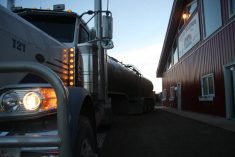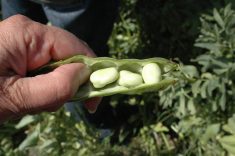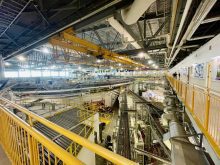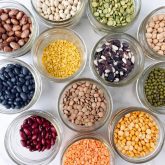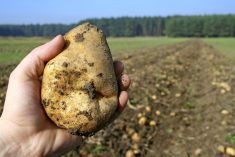Ag-fuelled processing in Alberta – everything from hemp and pulses to renewable diesel – is gaining traction and opening new markets for producers.
One of those is Canadian Rockies Hemp, which just opened the largest hemp fibre processing plant in North America at Bruderheim. The company’s products are used for textiles, building, pulp and paper and bio-composites.
“We’ve invested over $20 million now in infrastructure, building harvesting equipment, building the actual facility, all the processing equipment, as well as a couple million in baled feedstock,” CEO Aaron Barr said in a mid-September interview.
Read Also
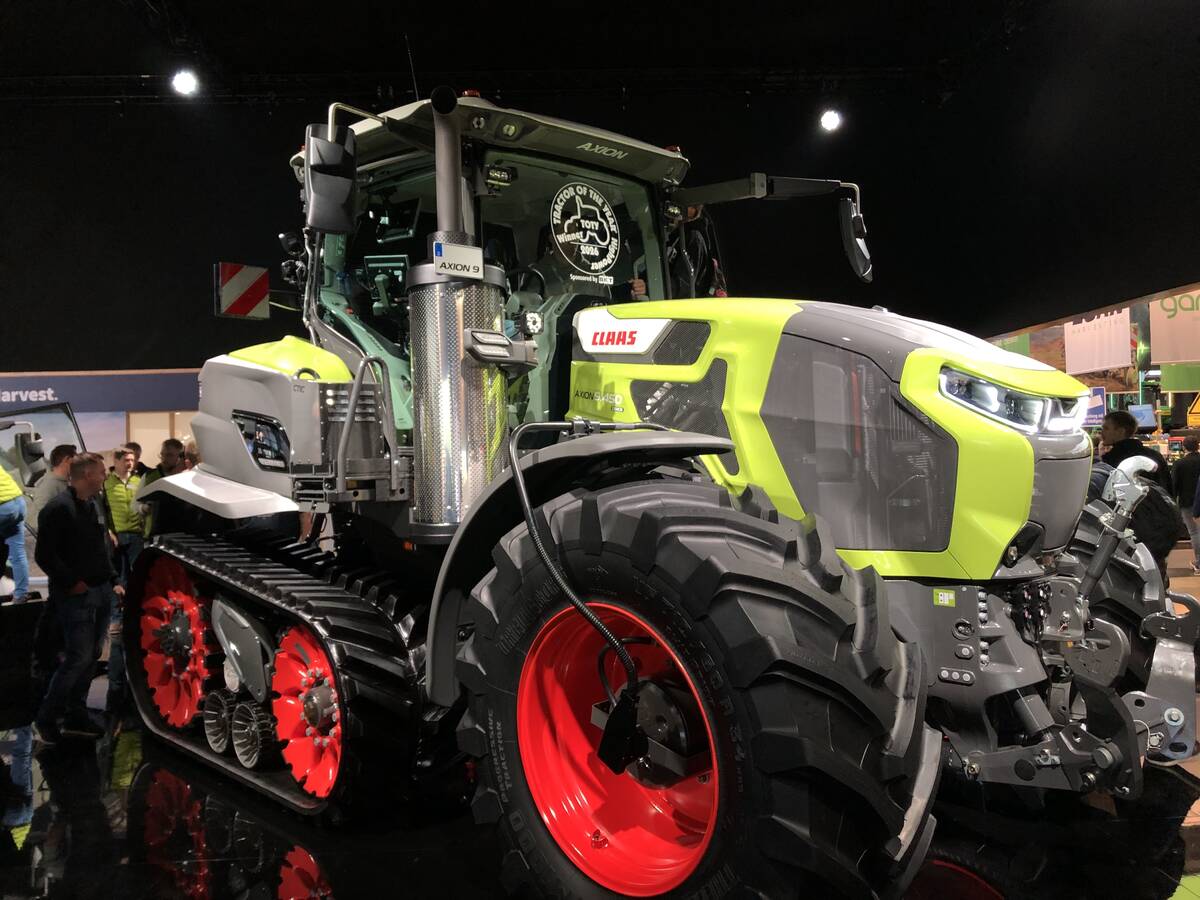
VIDEO: Claas Axion 9 tractors showcase comfort features
German equipment manufacturer Claas showcased its new Axion 9 tractor series, including farmer-focused cab features, at the Agritechnica 2025 machinery show in November.
“So our facility is built, and we actually have our engineers here from England as we speak, and we’ll actually be starting production next week.”
Another company, Phyto Organix, is on track to break ground on a $225-million pulse processing facility in Strathmore. The company is making headway on second-phase engineering and design, said Chris Theal, founder of the Calgary company. It is also in the process of securing its final round of equity financing.
“Our plan, really, is to have all that done and start moving dirt in Strathmore in the new year,” said Theal, an oil patch veteran. “We just got rezoning and subdivision approval. Our next big milestone is submitting foundation and development permits.
“Once you see earthmovers in Strathmore, it’s a continuous build for 22 months.”
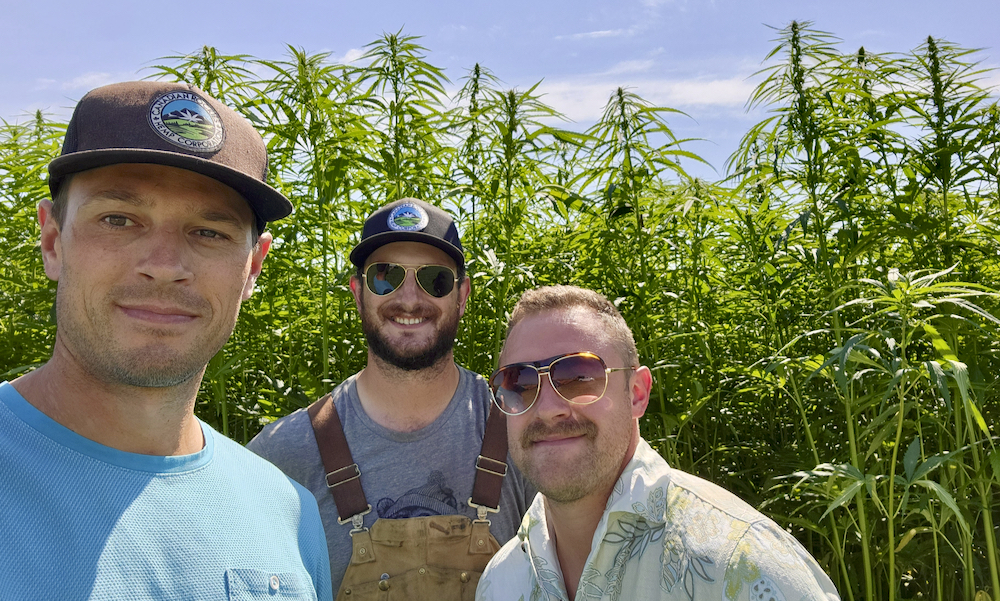
As well, Lovingly Made Ingredients, the textured protein manufacturing division of British plant-based meat producer The Meatless Farm, is expanding production at its 33,000-square-foot Calgary facility.
“We were crazy enough to carry on launching a major project during the pandemic,” said general manager Chris Shields. “But we managed to hit project delivery on time.”
These three projects may be just the start, said Bill Greuel, CEO of Protein Industries Canada.
Demand for ingredients for plant-based food continues to soar, and in a dozen years, global sales will be measured in the hundreds of billions of dollars, he said.
As a large producer of ag commodities, Canada can own 10 per cent of the market if it seizes the opportunity, and Alberta could have a one-quarter to one-third of the country’s output, he said. That would require a huge jump in processing capacity over the next 10 to 15 years – enough capacity to process 1.5 million to two million tonnes of crops annually.
The groundwork is already being laid, said Greuel.
“A lot of companies in Alberta are developing new and novel ingredient processing technologies and are in the process of actively raising capital to construct facilities,” he said. “That’s tough work because the capital markets are tight. (But) they have good technology and good management teams. I think they’ll be successful.”
What it means on the farm
Anytime a producer can truck directly to a buyer and doesn’t have to rely on railways, “that’s a good day,” he said.
Pulse fractionation enterprises, which break whole pulses into protein, starch and fibre, are on track to join canola crushers as major buyers of prairie crops.
“I think the biggest thing the companies in Alberta are after today is protein extraction from yellow field peas,” said Greuel. “There are different ways that can be done.”
Once up and running, Phyto Organix expects to buy 40,000 tonnes of peas annually from local farmers. The company hopes for an output of 9,500 tonnes of protein isolate, 17,000 tonnes of starch, 3,000 tonnes of process fibre and 4,400 tonnes of pea hull fibre per year.
“That’s one of the things about our plant – call it the overall sustainability pedigree,” said Theal. “Eighty-six percent of what’s in a pea is human consumable.
“The residual, we call it fertilizer cake. That’s either got application in biogas or for regenerative farming and we are exploring both those avenues so there’s minimal waste.”
The range of uses for food ingredients is even wider.
Lovingly Made Ingredients’ end products are used in burgers, soup and cereal. The site currently employs 14 people three days a week but the recent expansion will see production increase.
The company anticipates using 4,000 tonnes of peas next year to produce 1,000 to 2,000 tonnes of ingredients, and that could rise.
“With the machine that we have, we can output about 6,000 tonnes a year,” said Shields.
Not just food
Industrial hemp is nothing new in Asia and Europe, said Barr. Much of the technology and processes being used at the Bruderheim plant have been adapted from countries with developed hemp markets. And the equipment has come “from all corners of the world,” he said.
But raw material – hemp stalks – must be close at hand.
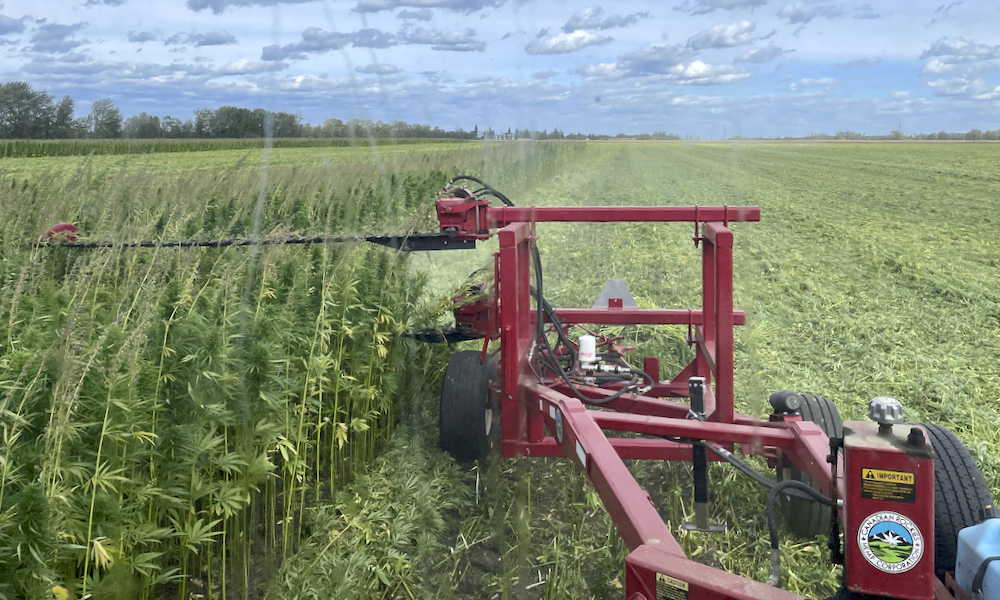
“We contract farmers generally within a 150-kilometre radius of our facility, 40 minutes north of Edmonton,” said Barr.
Although few farmers have much experience with growing hemp, his company is lowering the barriers for newbies.
“In our model we’ve kind of coined the phrase, ‘seed, spray and walk away,’” he said. “We provide farmers with the growing seeds. They do any in-crop management if needed. And then we come in with our harvest crews and we do all the cutting and hauling.”
Cutting hemp stalks isn’t easy and Barr said the company designed its own harvest cutters, deploying six of them this year. Next year he hopes to have 15.
“We process sticks, so there’s not a lot of leaf matter or seed or flower in that,” he said. “We basically have two main products, fibre and hurd, which is that little wood chip. About 20 per cent of our production will be staying in Canada.”
According to The Business Research Company, a global market firm headquartered in London, the hemp fibre market is growing by 40 per cent annually and sales will hit $26 billion by 2026.
That’s tiny compared to demand for renewable diesel.
A new report from CoBank predicts production of green fuel in the U.S. alone will grow six-fold by 2030 to 6.5 billion gallons annually. That will require 17.9 million acres of soybeans, said CoBank, a major American ag lender.
On this side of the border, Imperial Oil’s refinery at Strathcona, on Edmonton’s outskirts, could be one of the largest producers of renewable diesel in the country.
The planned facility could produce around 20,000 barrels (more than three million litres) of renewable diesel per day by 2024, said Keri Scobie, public and government affairs manager at the refinery.
“We’ve been targeting the end of 2024 or early 2025,” she said. “We are going to be building this in our existing refinery footprint. There’s lots of dirt moving at the moment and it’s quite exciting. We are in the early stages of getting some of that space ready.”
Imperial Oil is also looking to leverage hydrogen produced during the process, with carbon capture and storage technology, to help Canada meet low-carbon fuel standards, said Scobie.
Renewable diesel can be used just like regular diesel, she said, noting there are some emissions associated with burning it.
“But it’s the process where we really see the benefits; the clean nature of that by using low carbon hydrogen with the feedstock,” she said. “The carbon is being captured underground, that happens at the Air Products’ facility, so it is a much cleaner process.
“When you think of it from a numbers perspective, it’s expected to realize about three million tonnes of emissions reductions in the transportation centre annually.”
The company is considering canola, soy and camelina oils as feedstocks but canola seems likely to lead the list, with industry officials predicting the renewable diesel sector will be a major consumer of the crop in coming years.



